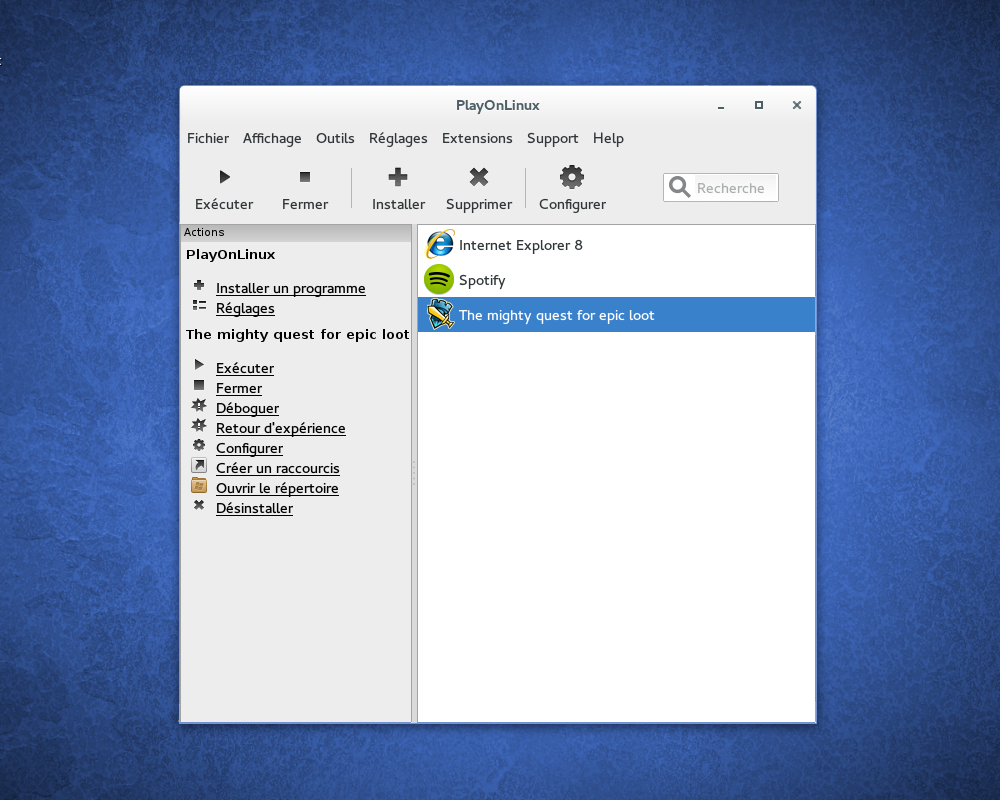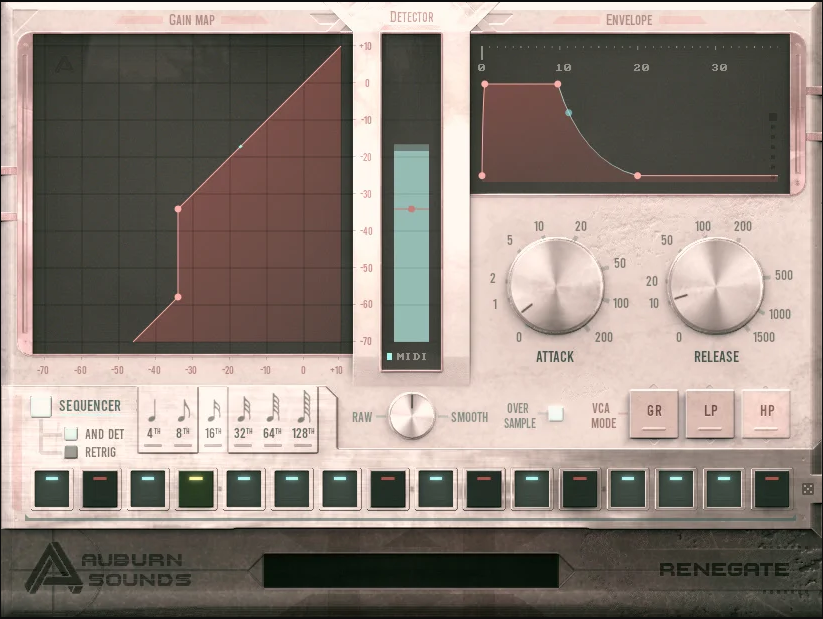Install Vst Plugins Linux
To enable 32 bit vst's on a 64 bit system, a distro's multilib needs to be installed (on Ubuntu it would be sudo apt-get install gcc-multilib g-multilib).
Run Windows VST plugins on Linux
I can convert vst windows files (.dll) to linux vst (.so) but when I load the plugins on Carla or QTractor the plugins no have GUI, I can play synths but no see the parameters. For installing, I follow the official instructions from github page of linvst. More FL Studio Videos - to install plugins on FL Studio 20Installing extra plugins in FL studio can be tricky. Let me walk you throug. VST-PLUGIN DIRECTORY is where LMMS will look for VSTs. In Synth1's case, it will need to be installed. This is not always the case with VSTs, but for the few that ask you to specify the installation folder, be sure to always use the same one. It is also recommended that you use a sub-folder structure for the various VSTs. Element A plugin/standalone utility to host other plugins. Includes support for VST, LADSPA, and LV2 native Linux plugin formats. ESX/EMX Plugins Control and edit your Korg Electribe from a Linux VST. Albert Graef's cool project to convert Faust DSP code to VST/VSTi plugins. How to setup your Linux environment for building VST 3 plug-ins. In order to build the SDK successfully you need an Ubuntu based Linux distribution. Other distributions might work as well, but are not tested. TAL Plugins Collection: sudo apt install tal-plugins-vst – Togu Audio Line Plugins; Zyn-Fusion: sudo apt install zynaddsubfx-git – Installs ZynAddSubFX with the new ZynFUsion UI. OBXD: sudo apt install obxd-vst – Oberheim OB-X Polyphonic analog synthesizer emulation plugin; Getting Reaper to recognize Linux VST’s.

Originally developed at Breakfast Quay but now grown up and movedaway, dssi-vst is an adapter that allows users of Linux audiosoftware to take VST and VSTi audio effects and instrument pluginscompiled for Windows, and load them into native LADSPA or DSSI plugin hosts.

Plugins run at full speed for most audio processing, although theiruser interfaces are slower because of the Windows emulation.
dssi-vst can also be used to run 32-bit Windows VST pluginsin a 64-bit Linux host.
dssi-vst requires Wine libraries for Windowscompatibility, and is therefore best obtained directly from a Linuxdistribution repository that can provide all of the required librariesat the time of installation. Installing dssi-vst without adistribution package can be quite tricky to do.
dssi-vst is free, open source software. It is distributedunder the GNU General Public License, with a special exception topermit redistributing it in binary form when built with the non-freeSteinberg VST SDK. (The default build does not use the non-free SDK,and so is completely GPL.)
dssi-vst is now maintained by Filipe Coelho (falkTX). Thecurrent code can be found at Filipe's Github repository.
Note:/full-band-vst-free.html. Steinberg and VST are registered trademarks ofSteinberg Media Technologies GmbH and are used here for informationalpurposes only. No relationship or endorsement is implied.
One of the big hurdles for me when switching from a Mac based audio setup was the potential loss of access to my expensive collection of VST plugins (because a lot of developers still ignore the Linux platform as if it was 1995 even though it has never been easier to make and release cross platform plugins). Little did I know that almost all of them would run just fine on Linux using the wine Windows compatibility layer and the linvst VST plugin bridging software.
The workflow for getting set up though was quite difficult before I switched to Arch based distributions than on other Linux distributions (thanks to the Arch User Repository (AUR)), and even though it is significantly easier on Arch, it still has some quirks in the setup process which I have tried to collect here as a set of instructions and notes for getting started.
DisclaimerThere may be licensing problems in doing this operation on some plugins. I talked to a commercial plugin developer about using their plugins on Linux and they said that it sounded interesting (because they developed everything on Linux anyway (but did not make releases for Linux)) but that I was probably in conflict with their licensing when doing so. I don’t take responsibility for anyone breaking any laws here.
Preparations
Enable 32 bit repositories
To install wine (and enable 32 bit support) you need to do enable the multilib repositories in your pacman configuration.
By doing this, you get access to a range of 32 bit software that can be run on a 64 bit machine.
Open up /etc/pacman.conf in your favourite text editor. E.g. in vim:
And then uncomment the multilib section:
Jriver vst plugins. And then upgrade your system:
See the arch wiki for more information.
wine
To be able to run Windows software on Linux, you need to install wine. Wine is a huge subject in itself (and I definitely do not master it at all), but it basically runs as a compatibility layer between windows software and your linux system.
If you followed the previous step by enabling multilib, you should now be able to install wine like this:
Setting up linux VST compatibility
The main software used to enable windows VST plugins is linvst. It is used to create bridges between the windows .dll files that VST plugins are delivered in and creates a Linux equivalent .so file. Managing this process can be complicated and a bit of a pain, but thankfully there is a program to do it all for us: https://github.com/Goli4thus/linvstmanager.
Linvstmanager is the main program we use to keep track of vst plugins, where they are and if they are supported on our system.
There are packages for linvstmanager and all of the linvst bridges on the AUR that can be installed using yay or another aur helper system:
Setting linvstmanager preferences
Before we are able to use linvstmanager, we need to tell it where the vst bridges we installed along with it are in our system.
If you used the packages from the AUR, they are probably in /usr/share/LinVst. Select and find them in your preferences.
Next up you need to set a folder that will contain your plugins. This is called the Link folder. This is the folder your DAW needs to read from when scanning for VST Plugins. I have put mine in a hidden folder called .vst-win in my user’s home directory but you can put it anywhere.
Installing a plugin
This is the workflow I use for downloading and installing a plugin. See the linvstmanager documentation for a more thorough explanation.
Part 1: Install the plugin to your wine drive
- Go to the developer’s website and download the
.exefile for installing the plugin on a Windows system. - Open up a terminal and execute
wine path/to/plugin.exe - Follow the install instructions of the vst plugins you are installing. Note where you are putting the
.dlland/or.vst3files at the end of the installation.
This will leave the plugin files in your wine installation’s “C” drive which is probably in your home folder: ~/.wine/drive_c
Part 2: Find and enable the plugins in vstmanager
- Open
linvstmanagerto create a bridge to your new plugin. - Scan for your plugins (press
ALT+sor go to the menuEdit->Scan) - Choose the scan folder by clicking
select. If you don’t see any hidden folders (starting with a.), you can right click and chooseshow hidden files. Then go to.wineanddrive_c. - Once the scan is finished you should get a list of files. Find the ones you want to use and press
sto select. - Click
Add
Part 3: Enable the plugin
In the main window of linvstmanager you should now see your plugin listed with a no so warning next to it.
- Update by pressing
uor going to the menuEdit->Update - Right click on the plugin you just added and click enable. It should now turn green.
Part 4: Save settings
Before finishing off, save the settings.
Go to menu File->Save or press Ctrl+s
Scan for the plugins in your DAW
You should now be able to use your newly bridged Windows VST plugins in your DAW. Point it to the link folder you set in your linvstmanager preferences and scan for the plugins.
In Reaper (which, by the way, has an amazing Linux native installation) for example, you can add the Link folder as a path in your Preferences.Find the VST tab and add the Link folder path you set in linvstmanager.The syntax for this consists of full path names with semicolons (;) in between: /a/full/path;/another/full/path
After adding the path, click re-scan.
Install Vst Plugins Linux Installer
An alternative approach: Using Carla
Vst Plugins For Fl Studio
An alternative approach is to use carla, which has been outlined nicely by kindohm / Mike Hodnick in this post.